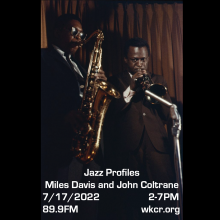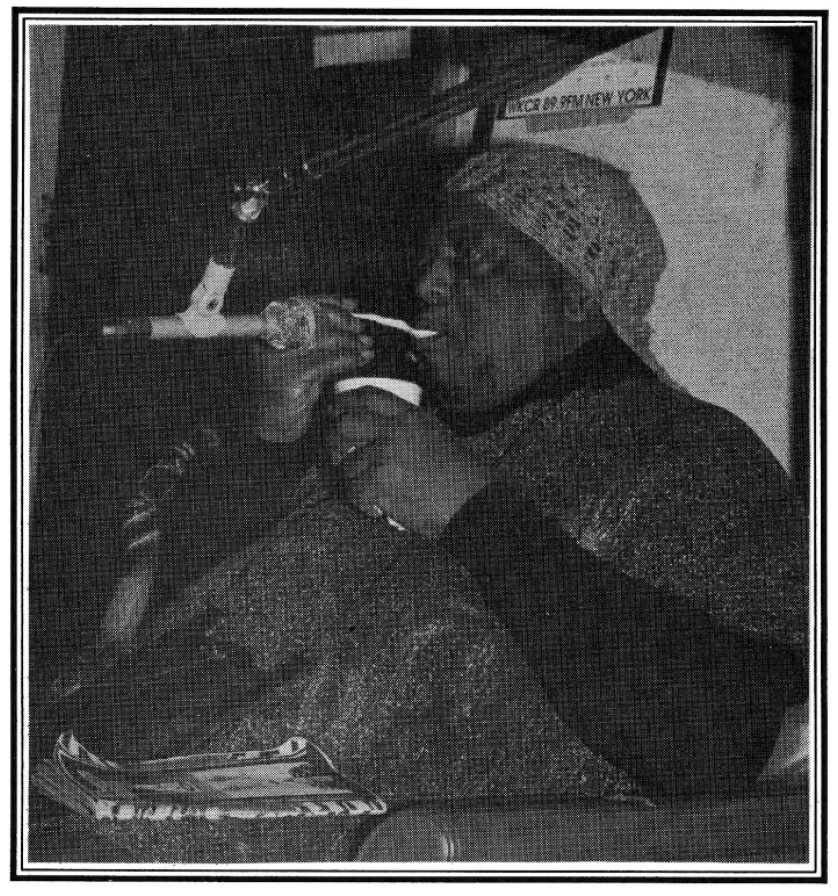
Sid Gribetz examines the collaboration between Miles Davis and John Coltrane in a radio feature for five hours, this Sunday July 17, 2022 from 2-7 PM on “Jazz Profiles” on WKCR.
Miles Davis was a teenage trumpet prodigy who came to fame during the bebop years of the 1940's. Despite this reputation and additional successful endeavors, such as with the Birth of the Cool band and other post bebop ensembles, by the mid-1950's Miles had fallen from popularity and was also in ill health.
Saxophonist John Coltrane had some accomplishments as a professional jazz musician but in the mid-1950's was in his late twenties and mostly performing around his home turf in Philadelphia and searching to develop his sound.
Miles Davis regained notoriety with his captivating performance at the 1955 Newport Jazz Festival. In its wake, he was signed to a lucrative contract by major record label Columbia and was booked for many significant concerts and tours. Assembling a new band for these engagements, Davis hired Coltrane for the saxophone chair, and had the stellar rhythm section of Red Garland piano, Paul Chambers bass, and Philly Joe Jones at the drums.
From the fall of 1955 through the spring of 1957 this group performed regularly and made numerous now-classic recordings to finish Miles’s existing Prestige Records obligations. When released to begin fulfilling his new Columbia contract, Davis made sessions to constitute the acclaimed “‘Round About Midnight” album on Columbia.
Later in 1957 Miles fired Coltrane and Philly Joe, and he moved on to orchestral projects with Gil Evans and a sojourn in France where he did film scores for Louis Malle. Meanwhile Thelonious Monk combined with Coltrane in their legendary association and six month Five Spot gig, which helped Coltrane’s musical growth to new heights.
In 1958, Miles Davis re-formed his combo, bringing back Coltrane, adding the alto sax of Cannonball Adderley, experimenting with different pianists in addition to Garland, such as Bill Evans and later Wynton Kelly, and drummers such as Art Taylor and Jimmy Cobb, to add further textures and flavors to the ensemble. The 1958 band produced great Columbia recordings “Milestones” and the Green Dolphin Street session with Evans, among others.
With their continued advances, and adaptation of “modal” styles, the Davis-Coltrane musical collaborations hit its zenith in early 1959. The Miles Davis group created the most famous jazz album of all time, “Kind Of Blue”.
At the same time, Coltrane, preparing to leave Davis and emerge in his own stardom, broke out with his “Giant Steps” LP, and moved on in his own career.
Finally, as a savory dessert, Coltrane would reunite with Davis for special concert tours in Europe and elsewhere in 1960, and he sat in on Davis’s 1961 “Someday My Prince Will Come” album.
Our program will present all these masterworks, in context. It will serve as a history primer “Jazz 101" for the jazz lay person; for the afficionado, it will be an afternoon to submerge oneself in the familiar songs for intense musical enjoyment.
